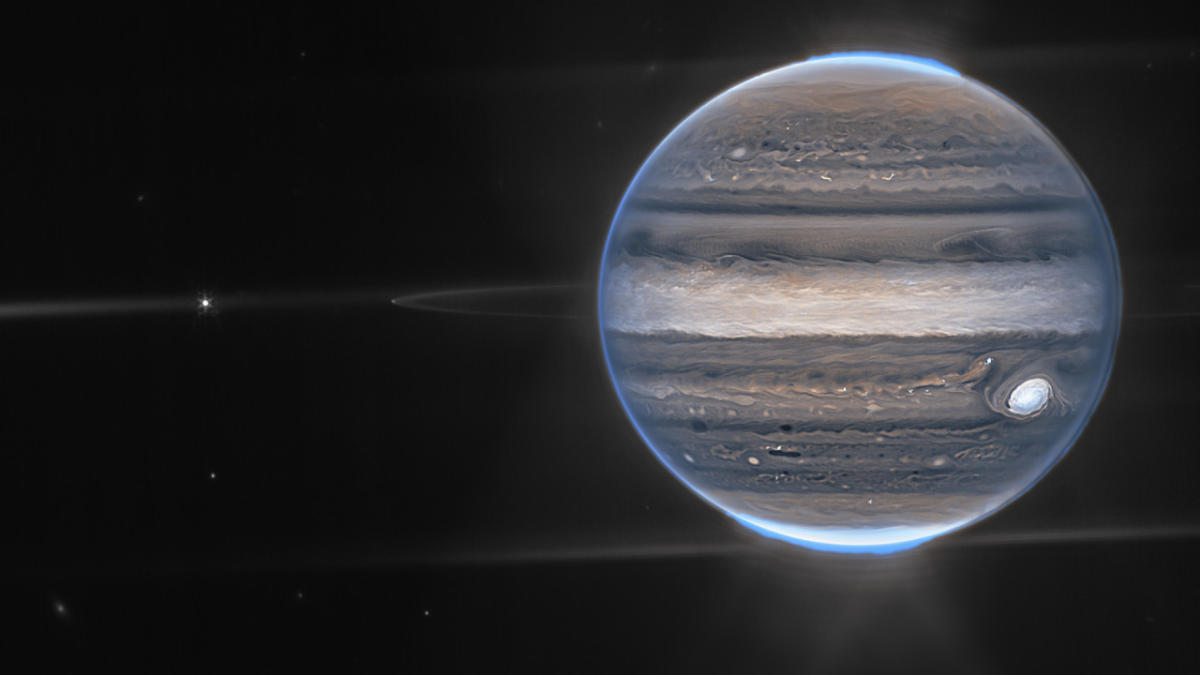[ad_1]
Jupiter Emerges as Most Moon-Laden Planet with 92 Moons Confirmed
Astronomers confirmed that Jupiter reigns as king again with 92 moons confirmed.
Having moons is something of a “fashion trend” in the solar system. Of all the big planets, only the two inner ones – Mercury and Venus – don’t have any (they may think they’re hot enough without them). Earth gets by with one (plus an occasional temporary moon), Mars has a small pair, probably picked up from the edge of the asteroid belt. However, things get really interesting in the outer solar system. Uranus has collected 27 that we know of while Neptune has 14 that we can see from here. Even tiny Pluto and Charon – our system’s unofficial binary planets – have amassed their own little selection.
However, it is Jupiter and Saturn that really dominate here. A rivalry between the two largest planets in our solar system has been going on quietly for decades.
Jupiter Saturn NASA ESA ASimon GSFC NASA JPL Caltech Space Science Institute
This composite image shows Jupiter via the Hubble Space Telescope alongside Jupiter as seen by the Cassini spacecraft. Jupiter Credits: NASA, ESA, A. Simon (Goddard Space Flight Center). Saturn Credits: NASA/JPL-Caltech/Space Science Institute
The earliest observations from 1600 to 1800 revealed five around Jupiter – Io, Europa, Ganymede, Callisto and Amalthea – and the nine brightest of Saturn’s moons – Titan, Tethys, Dione, Rhea, Iapetus, Mimas, Enceladus, Hyperion and Phoebe. During the 20th century, telescopes and spacecraft increased Jupiter’s list to 27 while doubling Saturn’s to 18.
Then, in the 21st century, special surveys showed us how much we had been missing. As of 2018, a total of 79 moons have been sighted around Jupiter. The following year, Saturn surpassed its rival with a total of 82. In 2021, amateur astronomer Kai Ly added enough observations to confirm an 80th moon, first sighted around Jupiter in 2003. Saturn still retained the title, however, and an 83rd moon was also added to its tally around the same time.
Based on observations over the last two years, Jupiter has now reclaimed the mantle with a total of 92 moons!
Jupiter Satellite Groups – Discoveries in 2023 – Scott S. Sheppard/Carnegie Science
This diagram shows the top and side views of Jupiter’s moon collection, with the different groups separated by color (inner irregularities in grey, Galilean in pink, Themisto in yellow, Himalia in blue, Carpo in light blue, Valetudo in green, and the retrogrades in red ). The orbits of the 12 newly confirmed moons are not shown but are included in the listing. Credit: Scott S. Shepard/Carnegie Science, labels by Scott Sutherland
The 12 satellites yet to be named include five newly discovered and seven first seen in previous observing campaigns and then confirmed by this most recent survey.
All are 1 to 3 kilometers in diameter and are scattered across the various “clusters” of Jupiter’s moons. Two are in the Himalia group (S/2018 J1 and S/2011 J3), while one joins Carpo (S/2018 J4), these three highly inclined orbits in the “prograde” direction (in the same direction as Jupiter’s rotation) have ).
Three more were found in the Ananke group (S/2021 J1, S/2021 J2 and S/2021 J3), five in the Carme group (S/2016 J3, S/2018 J3, S/2021 J4, S/ 2021). J5 and S/2021 J6) and one in the Pasiphe group (S/2016 J4), all of which have retrograde orbits (opposite to the direction of Jupiter’s rotation).
Jupiter Satellite Group TopDown SSheppard-Carnegie
This diagram highlights the different groups of Jupiter’s moons while also illustrating the direction of their orbits – prograde or retrograde. Credit: Scott S. Shepard/Carnegie Science, labels by Scott Sutherland
The tentative names of these moons refer to them as satellites of a planet (S), followed by the year of their discovery, the initial of the name of the planet they orbit, and the order in which they were found that year. Thus, Carme retrograde moon “S/2016 J3” was the third moon of Jupiter sighted in 2016, although it was confirmed and included in the Minor Planet Center records in January 2023.
Jupiter-marked-JWST-2022-07-27
Captured by the James Webb Space Telescope in July 2022, this view of Jupiter reveals the intricate details of the gas giant’s cloud bands, bright auroras at its poles, tenuous rings and two of its inner moons – Amalthea and Adastrea. Photo credits: NASA, ESA, CSA, Jupiter ERS team; Image processing by Ricardo Hueso (UPV/EHU) and Judy Schmidt.
Although Jupiter is the Solar System’s current “lunar champion,” the ringed planet could dethrone Jupiter forever if a similar search for small moons were conducted for Saturn.
Observations of Saturn with the Canada-France-Hawaii Telescope on Mauna Kea revealed 120 objects that researchers believe are “almost certainly irregular moons,” according to a study published in 2021 by astronomers at the University of British Columbia.
Brett Gladman, one of the co-authors on this article, told Sky & Telescope that “Saturn would have more moons than the rest of the solar system” if they counted all moons at least 3 km wide.
See below: Mimas, the Death Star’s moon, hides a secret subterranean ocean!
Click here to watch the video
[ad_2]
Don’t miss interesting posts on Famousbio
